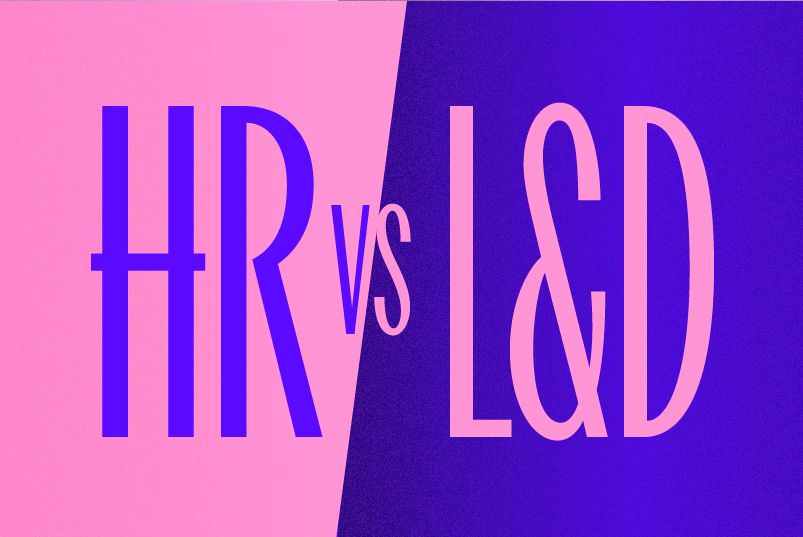Imagine your organisation as a ship navigating increasingly turbulent waters. On the port side, your HR team charts the course for talent: recruiting crew, managing performance, planning succession. On the starboard side, your L&D function develops skills and capabilities. Both teams work tirelessly, yet they rarely coordinate their maps. When the waters change (and they're changing faster than ever), your ship struggles to adjust because the left hand doesn't know what the right is doing.
This isn't a hypothetical scenario. It's the reality facing most organisations today, where 39% of workers' core skills will change by 2030 and skills have a half-life of just 4-6 years, down from 30 years historically. In this environment, the artificial separation between "finding talent" and "developing talent" isn't just inefficient. It's actively undermining your ability to compete.
The data tells a stark story. Whilst skills gaps represent the single highest workforce-related risk to organisational growth, only 11% of companies successfully execute skills-based workforce transformations. The reason? You can't build a skills-based organisation when the function identifying skills needs (HR) operates separately from the function addressing those needs (L&D).
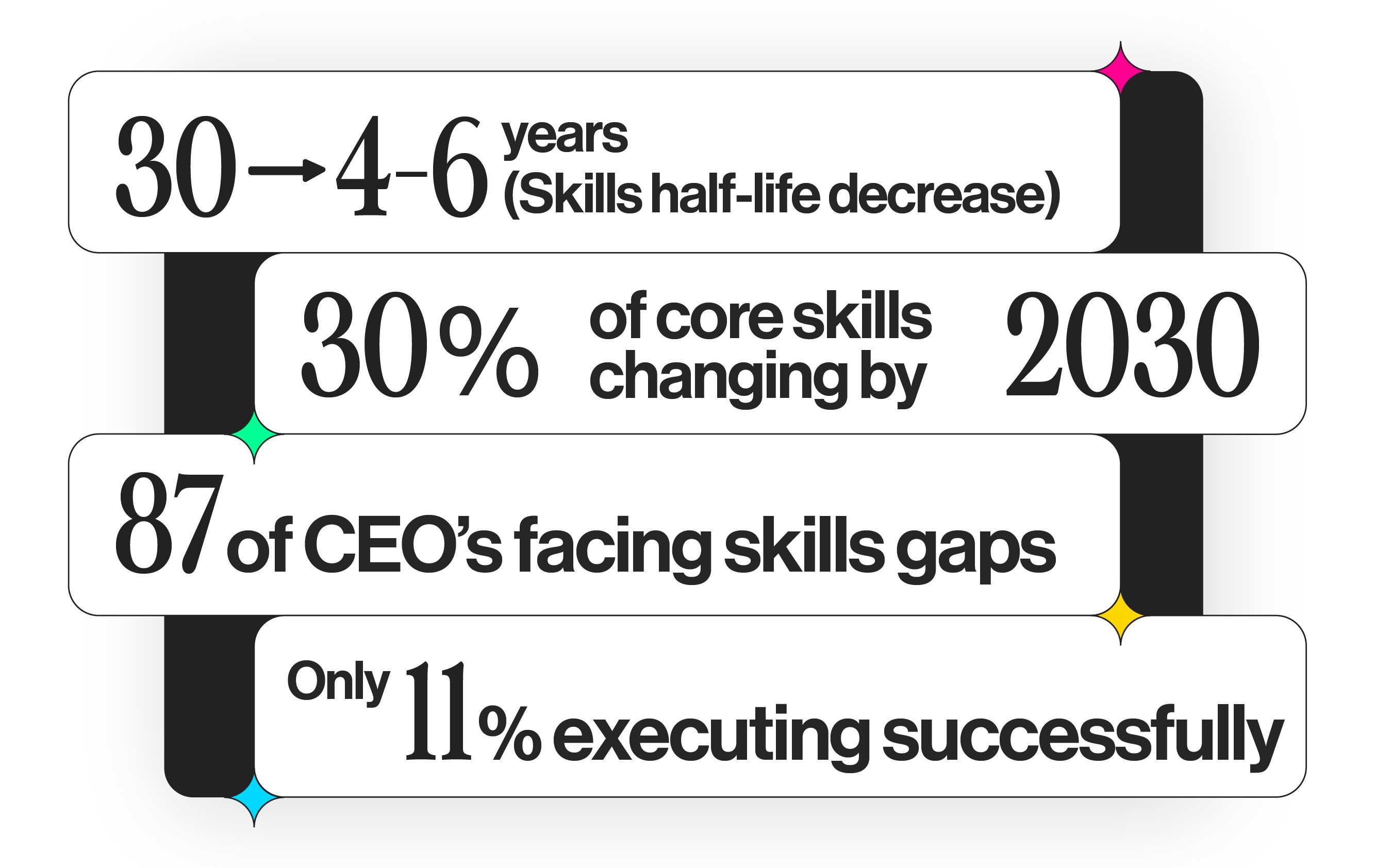
Organisations that successfully integrate HR and L&D demonstrate 50% higher employee engagement, 40% productivity gains, and 2.3x greater cash flow per employee. Yet most companies haven't reached this integrated level, remaining stuck in siloed, transactional modes.
The convergence of HR and Learning & Development under unified "People Functions" represents more than structural reorganisation. It's a strategic reconceptualisation of human capital as your primary competitive advantage.
The forces driving integration

Five interconnected pressures are making HR-L&D separation untenable, with the skills crisis emerging as the overwhelming catalyst. Skills shortages now rank as the single highest workforce-related risk to organisational growth, with nearly half of organisational and HR leaders citing this as their key challenge.
This intersects with severe labour market pressures. With over 20% of employees changing jobs annuallyand unemployment at historic lows, traditional "hire to grow" strategies no longer work. Staff retention has become the #1 people priority. In this context, separating HR (responsible for retention and engagement) from L&D (responsible for skills development) creates artificial barriers.
AI and technological disruption accelerate this imperative. Up to 30% of work hours could be automated by 2030, with generative AI dramatically accelerating knowledge work automation. Nearly half of workers' current skills will be disrupted in the next five years.
Productivity and leadership concerns compound the pressure. HR leaders increasingly report that managers are overwhelmed and underprepared for future challenges. Addressing this requires integrated approaches combining talent strategy, leadership development, performance management, and continuous learning—precisely the coordination unified People functions enable.
Finally, strategic workforce planning (critical for navigating uncertainty) requires cross-functional integration. Only a small minority of organisations practise long-term strategic workforce planning, whilst most focus only on 1-year operational horizons. Effective strategic workforce planning necessarily integrates business strategy, workforce analytics, skills gap analysis, talent acquisition, learning, and organisational design.
The good news? Organisations don't need to solve all five pressures simultaneously. A structured maturity assessment reveals which integration points deliver immediate value, enabling progressive capability building.
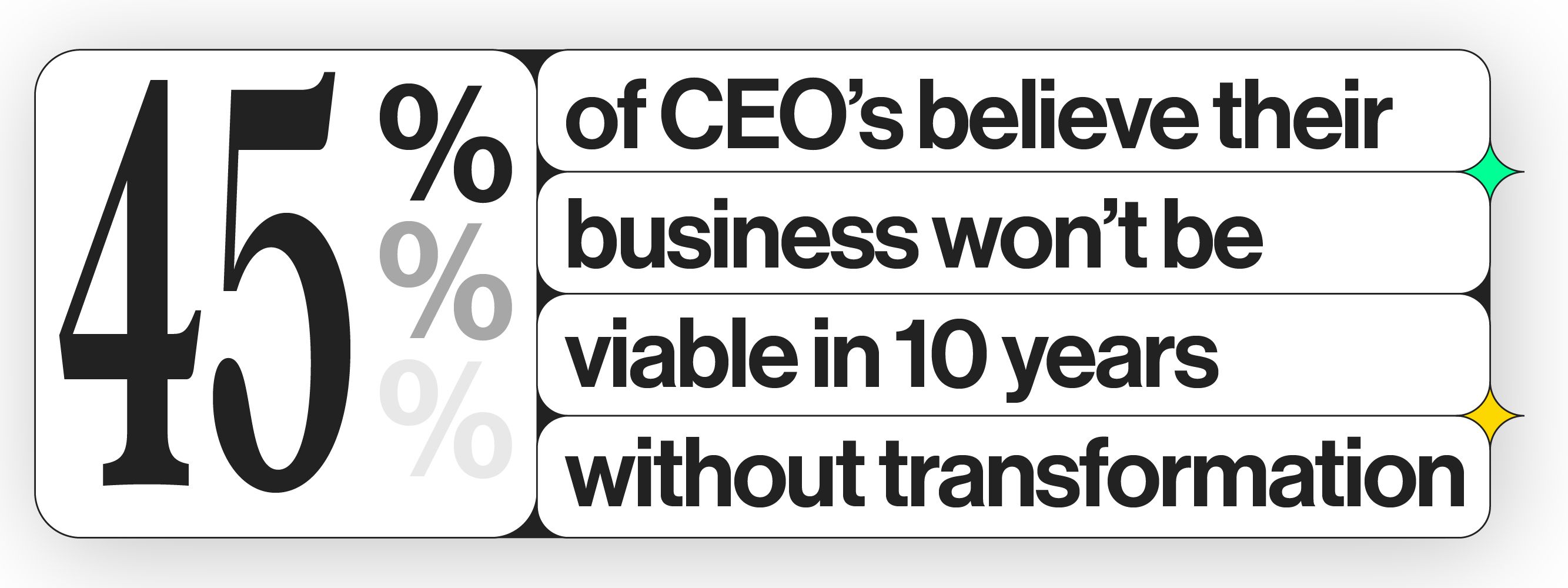
What success looks like: The NatWest Group example
NatWest Group's transformation to a "Goal and Journey" operating model demonstrates enterprise-scale integration at approximately 60,000 employees. Process efficiency improvements delivered 385,000 employee hours saved in 2024, with projections for 820,000 hours in 2025. Employees now access L&D support 24/7 through integrated digital channels.

The outcomes prove compelling. Process efficiency improvements delivered 385,000 employee hours saved in 2024, with projections for 820,000 hours in 2025. Employees now access L&D support 24/7 through integrated digital channels with learning embedded in "moments that matter" throughout their journey.
NatWest's success stemmed from several factors: executive sponsorship with clear vision, iterative approach with continuous improvement, investment in new skills (data analytics, strategic partnering, digital), clear role definitions and accountabilities, and technology enablement through self-service and analytics.
The critical challenges you'll face
Despite compelling benefits, organisations face substantial obstacles when integrating HR and L&D. Capacity pressures create immediate friction, with over half of L&D functions reporting increased workload whilst only a quarter saw headcount increases. The physical and mental wellbeing of L&D professionals has become a serious concern as workloads intensify without corresponding support.
Measurement and impact demonstration remain critical vulnerabilities. Only half of organisations have processes for assessing learning impact. Despite business leaders believing L&D is highly important, over half of organisations cannot measure learning's impact on business performance. This measurement gap undermines the business case for integration.
Technology readiness presents perhaps the most substantial barrier. Many organisations report their learning platforms are not fit for modern workforce needs, with dissatisfaction actually widening in recent years despite significant investment. Meanwhile, adoption of AI tools in L&D remains minimal despite high expectations, revealing substantial capability gaps between ambition and execution.
These challenges are real, but they're not insurmountable. Organisations successfully navigating integration share two common elements: a clear framework for assessing where they are today, and technology built specifically to support unified People functions rather than perpetuate silos.
The maturity model imperative: Getting both sides of the ship on the same map
Before your HR and L&D teams can coordinate those maps, they need to know their current position. Without shared navigation points, one side might be preparing for calm seas whilst the other braces for storms.
The Thinqi Maturity Model gives both sides of your ship the same navigation system. It's the conversation starter that gets HR and L&D speaking the same language.
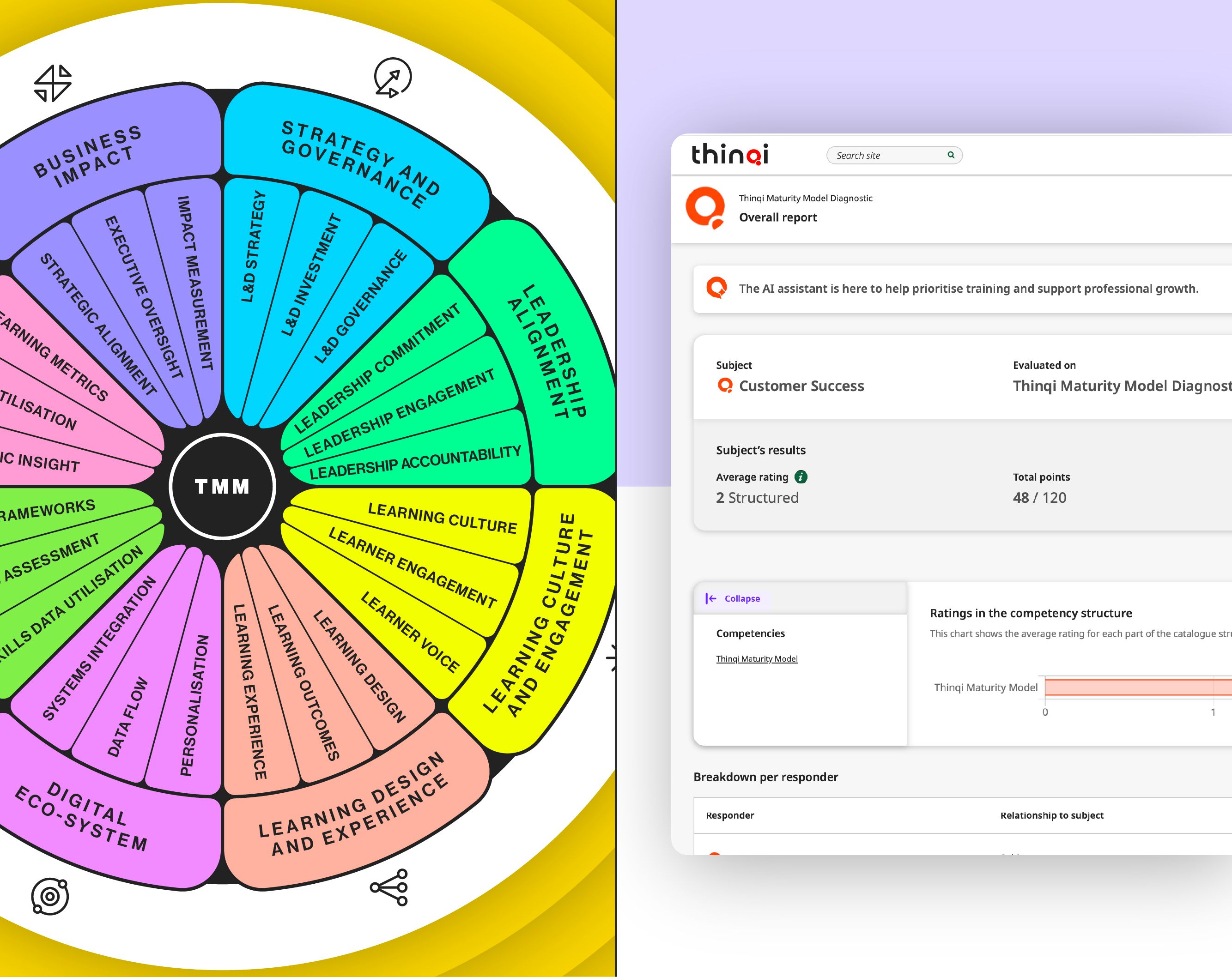
Over 25 years of working with hundreds of L&D leaders, overseeing talent strategy for central government and NHS organisations, and advising on education curricula reform for education ministries, we've seen this play out repeatedly: when HR discovers they're at Level 2 for Performance Integration whilst L&D sits at Level 3 for Learning Strategy, suddenly they're not on different pages anymore. They're problem-solving together about how to bring both functions up to Level 4.
The model reveals where the alignment gaps exist between your HR and L&D functions, and provides the shared coordinates both teams need to navigate toward the same North Star.
The five maturity levels: Your journey from separate maps to coordinated navigation
Reactive - Learning occurs in response to immediate needs like compliance or operational issues, without strategic direction. Leadership involvement is emerging but data use is minimal with no explicit business goal alignment.
"We respond to problems with training, but we're not learning strategically."
Structured - Learning operations are more organised with formal processes covering key use cases like onboarding or compliance. Systems and content are improving, but L&D is still seen as a support function with limited integration or measurable impact.
"Learning is consistent and managed but not yet strategic."
Integrated - L&D is embedded into business operations with strategic alignment to workforce needs, skills frameworks in use, and learner engagement actively supported. Data and content are used more effectively and leaders begin to own learning outcomes.
"L&D is integrated with business goals, systems and people."
Intelligent - Learning decisions are powered by analytics and skills data, with leadership accountability, real-time reporting, and personalised experiences. L&D supports proactive talent development and measurable business outcomes.
"Learning is data-driven, personalised and built for performance."
Adaptive - L&D fuels continuous organisational transformation through predictive insights, agile governance, and strategic workforce planning. Systems are integrated, content is continuously optimised, and learning drives innovation and growth.
"Learning is the engine of change and competitive advantage."
The eight core domains: Where HR and L&D must align
These aren't separate HR domains and L&D domains. They're the eight navigation points where both functions must coordinate to reach that adaptive North Star:
- Learning Strategy and Governance
- Is L&D strategy aligned to business objectives and resourced strategically?
- Leadership Alignment
- Are business leaders active participants in the learning culture?
- Culture and Learner Engagement
- How engaged and self-driven are learners?
- Content and Experience Design
- Is learning content relevant, high-quality, and rooted in sound learning design?
- Digital Ecosystem
- How modern, connected, and intelligent is your learning technology?
- Talent and Skills Management
- Are skills data and frameworks driving development and mobility?
- Analytics and Insights
- Is learning measured, analysed, and optimised effectively?
- Business Impact - Can L&D demonstrate quantifiable value to the organisation?
Research from Bersin & Associates shows that high-impact learning organisations generate three times higher profit growth than their peers, whilst organisations with strong learning cultures are 52% more productive and demonstrate 30-50% higher engagement and retention rates.
Yet 70% of organisations remain at Levels 1-2, with HR and L&D operating on those separate maps.
The maturity model provides more than assessment. It offers a roadmap. Organisations use it to compare performance versus peer groups, identify specific strengths and critical gaps, set realistic targets for each domain, prioritise improvements based on business impact, and track progress over time. This structured approach prevents attempting unrealistic quantum leaps whilst building capabilities progressively.
Modern learning systems as force multipliers
The evolution towards integrated People functions demands learning technology that supports rather than fragments this integration. Yet here's the sobering reality: only 55% of businesses with an LMS integrate it with their HRIS. This isn't a technical limitation—it's a strategic gap that perpetuates the very silos organisations are trying to eliminate.
The research shows what you're losing: organisations successfully integrating HRIS and learning systems demonstrate higher retention rates, increased internal mobility, more robust management pipelines, better alignment of learning with business goals, and significantly improved compliance tracking. When your systems can't talk to each other, neither can your teams.
The convergence of HR and L&D cannot succeed without technology that supports rather than hinders integration.
Legacy systems demonstrate severe limitations preventing effective coordination: limited functionality unable to accommodate mobile or social learning, outdated interfaces that frustrate users, poor scalability, limited reporting and analytics, closed ecosystems preventing integration, inflexible architecture, and high maintenance costs.

This is where modern learning systems like Thinqi take a fundamentally different approach. They align the triumvirate of learning, performance, and talent in one system, directly connected to business goals. Rather than treating these as separate domains requiring complex integrations, Thinqi was built from the ground up to support the integrated People function model.
Skills and Capability Management: Thinqi enables you to define comprehensive skills frameworks, assess current capabilities, identify gaps, and assign personalised learning pathways, all within a single system. Organisations can outline the full collection of skills, behaviours, and attitudes they value, define competency profiles for individuals, and create success profiles for roles. This skills intelligence directly informs talent decisions, performance conversations, and career planning without data living in disconnected systems.
Talent Management Integration: Developing in-house talent is crucial for organisations adapting to the future of work. Thinqi's talent management capabilities support building talent pools, succession planning, leadership development, career management, performance management, and engagement. All are connected to the learning experiences people need. Line managers get visibility into learner reports before performance reviews, ensuring continuous development conversations rather than disconnected annual events.
Personalised Learning Experiences: Modern learners want flexibility, accessibility, connection, and control over their development. Thinqi provides personalised learning planners, clear to-do lists, and smart recommendations for relevant content. The system provides "scaffolding" support through networks and 1:1 coaching whilst enabling self-directed learning. Content is tagged and catalogued to create clear pathways of resources relevant to learners' needs, addressing the cognitive overload problem that plagues content library approaches.
Data and Analytics: Analytics are key to effective L&D strategy, but data doesn't have to be daunting. With Thinqi, you can measure compliance, learning progress, skills, engagement, digital body language, and achievement in one central system. xAPI tracking enables you to consider the bigger picture, from learners' initial thoughts about learning through to impact on their everyday working life. Present data with clear visualisations, prove the impact of L&D, and let the numbers do the talking when justifying investment.
Alignment to Business Goals: Goals and objectives in Thinqi tie learning activities directly to key objectives for an L&D strategy that delivers results. Rather than running learning programmes disconnected from business priorities, modern systems ensure every development activity connects to the capabilities your organisation needs. This alignment (often lost when HR sets business-driven priorities whilst L&D operates independently) becomes inherent to how the system functions.
The evolution towards integrated People functions demands learning technology that supports rather than fragments this integration. Research shows only 55% of businesses with an LMS integrate it with their HRIS, revealing a significant gap.
Organisations successfully integrating HRIS and learning systems demonstrate higher retention rates, increased internal mobility, more robust management pipelines, better alignment of learning with business goals, and significantly improved compliance tracking.
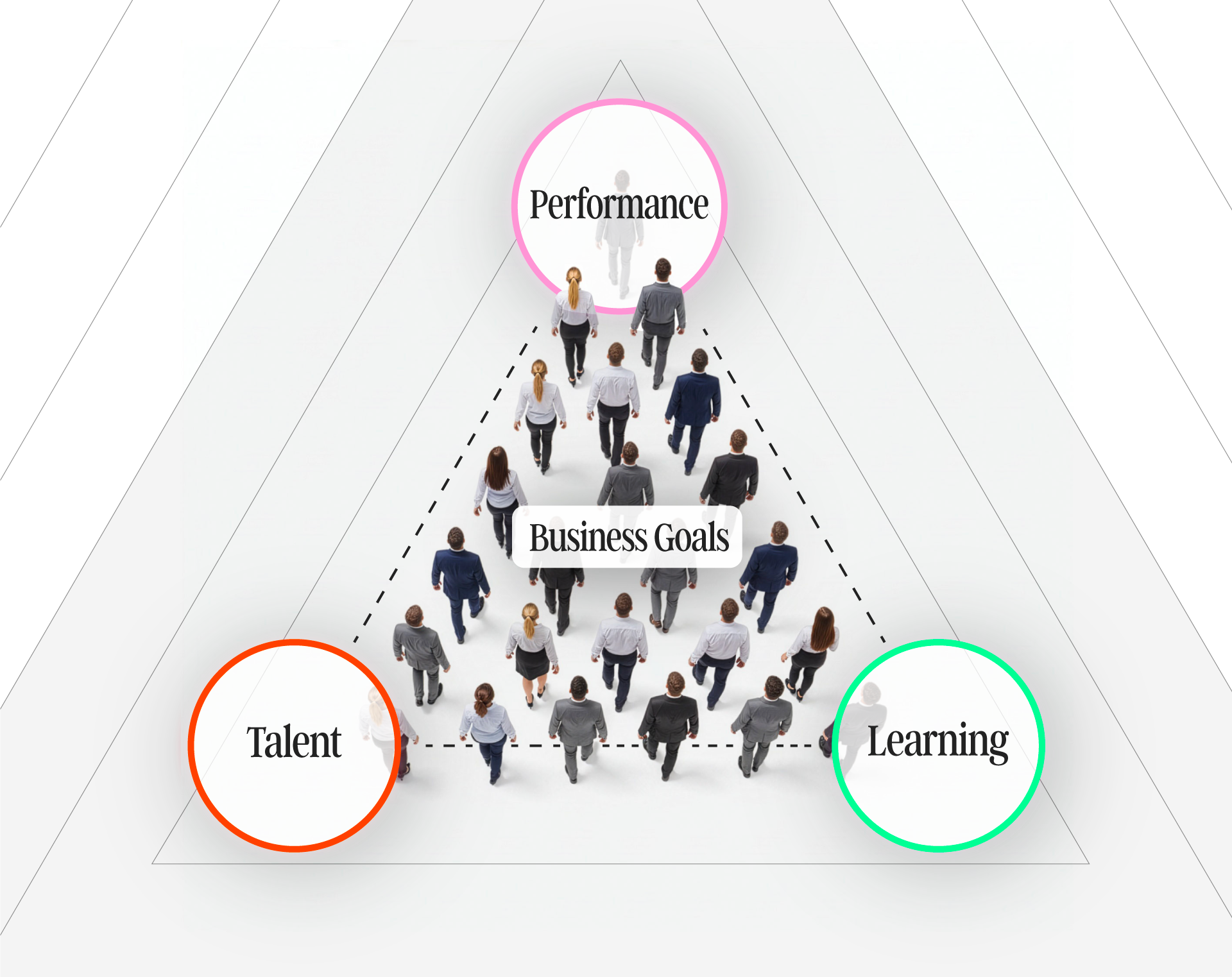
The skills economy demands this integration
The emergence of a "skills economy" fundamentally challenges traditional job-based talent management, requiring the tight HR-L&D integration that unified People functions enable. This paradigm shift views work as portfolios of skills rather than fixed roles, enabling dynamic matching of capabilities to opportunities.
Research shows 90% of global companies want skills-based workforce planning, yet only 11% successfully execute these transformations. This is primarily because skills-based approaches require capabilities spanning talent acquisition, learning, performance management, career pathing, and compensation. Coordination is impossible with siloed structures.
The urgency stems from unprecedented skills obsolescence. IBM estimates 40% of the global workforce (1.4 billion people) will need new skills in the next three years.. Technology skills have half-lives of just 18 months to 2 years, whilst business skills last approximately three years. Organisations with skills-based approaches see 80% reduction in time to hire, whilst those hiring for promise instead of proficiency find new employees are 1.9x more likely to perform effectively. Most compellingly, organisations with mature skills-based approaches are 98% more likely to retain high performers.
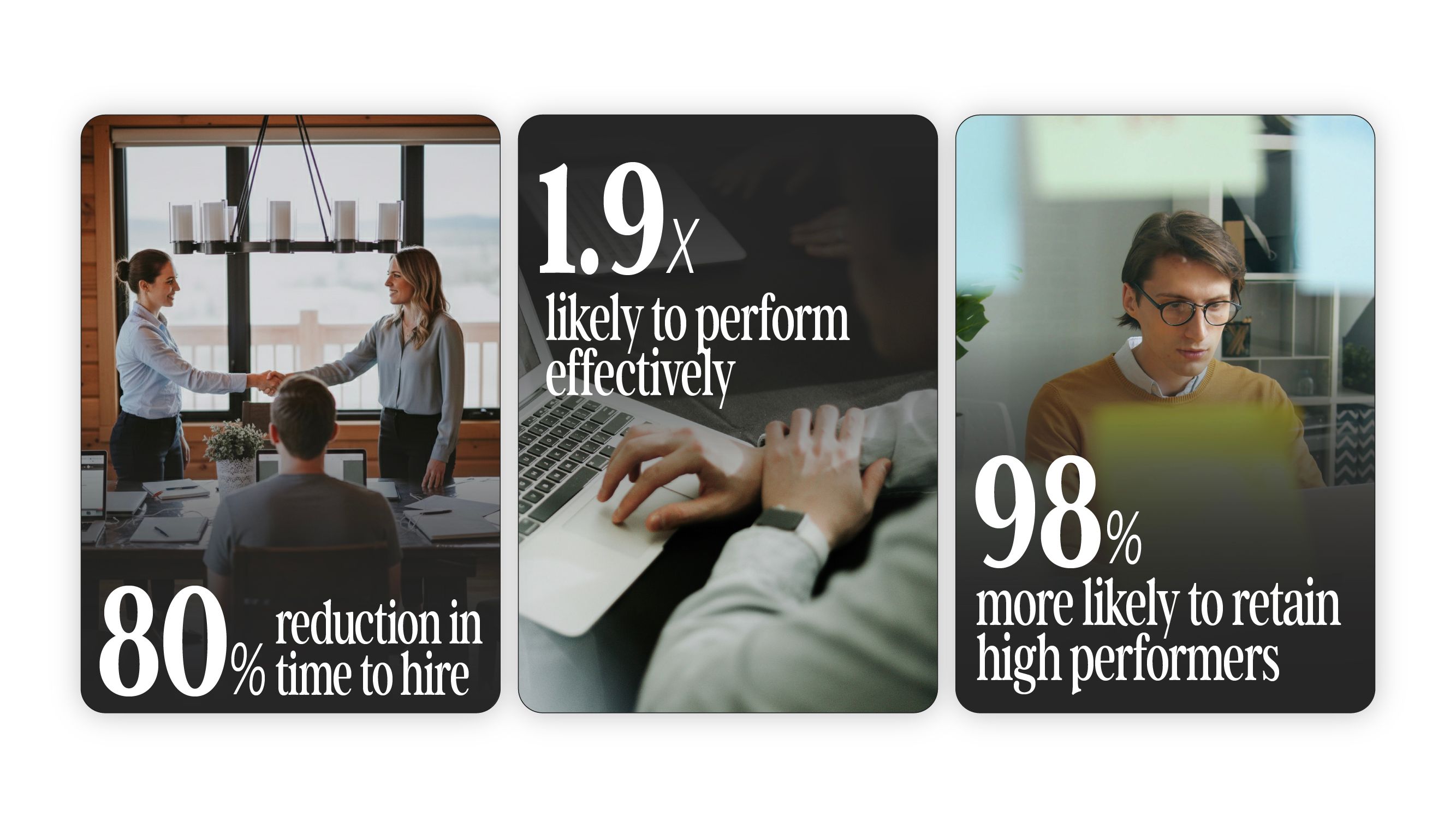
However, implementation requires capabilities spanning HR and L&D domains. Skills intelligence platforms must identify, track, and recommend skills. Talent acquisition shifts from credential-screening to skills-based hiring. Learning systems deliver personalised development tied to skills gaps. Performance management evaluates based on skills demonstrated. Career pathing shows progression through skills acquisition. This level of integration cannot function with siloed teams operating independently.
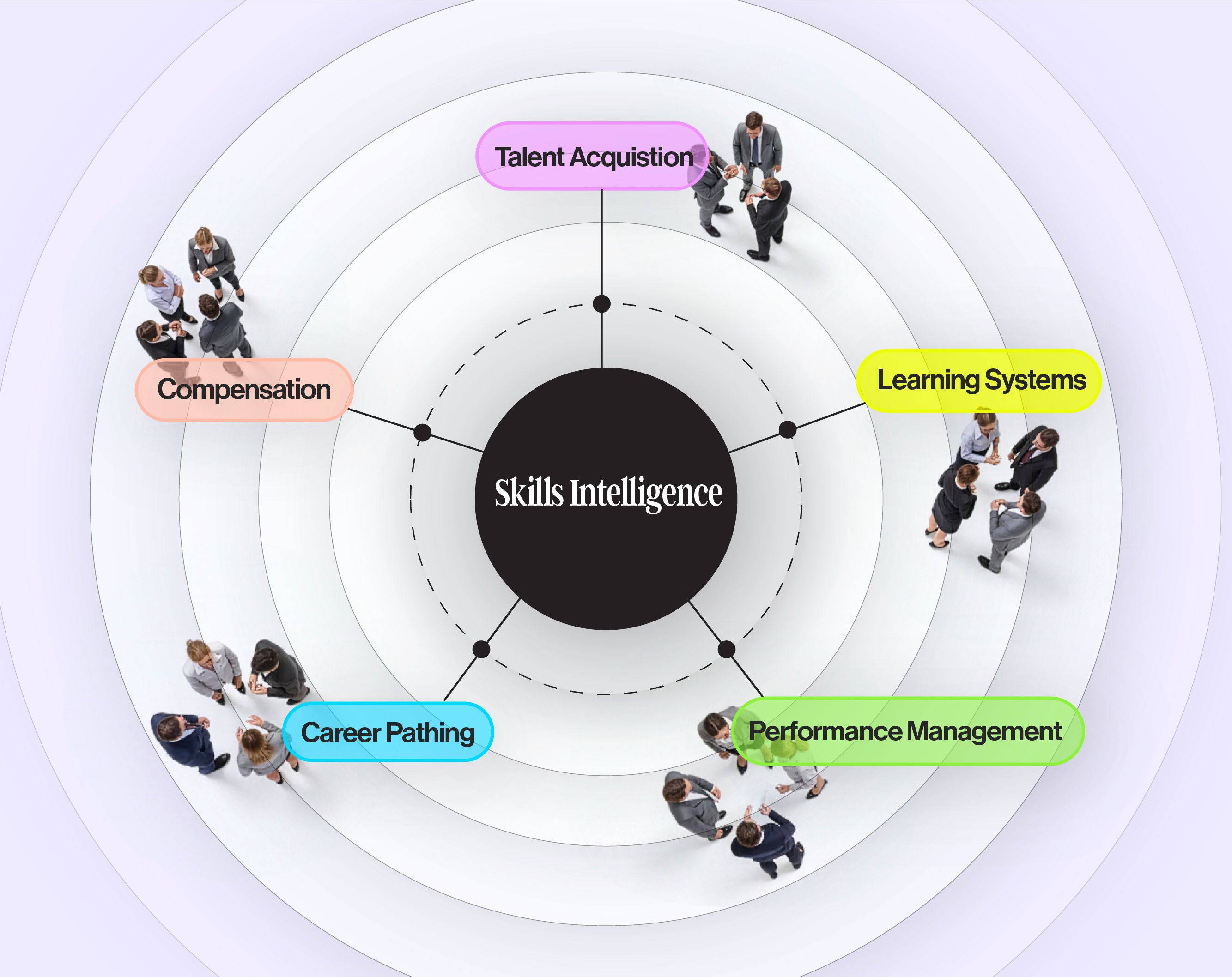
Looking forward: The 2026 imperative
The convergence of HR and L&D represents not a trend but a strategic imperative for organisational survival heading into 2026. With skills half-lives of 4-6 years, 87% of CEOs facing critical skills gaps, and only 23% of employees globally engaged whilst creating $8.9 trillion in lost productivity, fragmented People functions cannot deliver the agility, integration, and responsiveness business strategy demands.
The question isn't whether to integrate HR and L&D functions but how quickly and effectively you can execute this transformation. The research, examples, frameworks, and technology capabilities all exist. Organisations that successfully converge demonstrate 50% higher employee engagement, 40% productivity gains, and 2.3x greater cash flow per employee. These step-function changes create compounding competitive advantages.
But transformation requires knowing where you stand today. The Thinqi Maturity Model provides that baseline, assessing your organisation across eight essential domains and five maturity levels. Whether you're reactive and responding to immediate needs or adaptive and driving continuous transformation, understanding your current state enables you to set realistic priorities, build capabilities progressively, and chart the path towards becoming a truly integrated People function.
Your ship still faces turbulent waters ahead. But with the right assessment framework and the right technology—learning systems that align learning, performance, and talent to business goals rather than creating new silos—your HR and L&D teams can finally coordinate their maps. They can adjust course together in real-time as conditions change, rather than discovering too late they've been navigating toward different destinations.
The integrated People function operating as strategic business partner represents the organisational model capable of meeting the challenges ahead.
Twenty-five years of experience with hundreds of L&D leaders across public and private sectors has taught us one fundamental truth: organisations that treat learning, performance, and talent as interconnected elements of a unified strategy consistently outperform those that don't. The convergence imperative isn't about reorganisation charts. It's about recognising that in a skills-based economy where change is the only constant, your people's capability to adapt, grow, and perform determines everything else.
Ready to assess where your organisation stands on the maturity journey? The Thinqi Maturity Model provides a structured framework for understanding your current state and charting the path forward. Don't miss out—sign up for updates.
